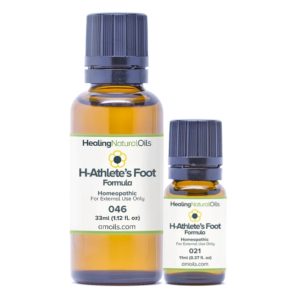Athlete’s Foot
Athlete’s Foot Causes and Treatment
Athlete’s foot is caused by a common fungal infection that affects the feet. One of the main symptoms of Athlete’s foot is itchy white patches between your toes.
The condition is contagious and can be spread via contaminated floors, towels or clothing.
Athlete’s foot is closely related to other fungal infections such as ringworm and jock itch. It can be treated with topical antifungal medications, but the infection often comes back.
Athlete’s foot can affect one or both feet. Common signs and symptoms are:
- Scaly, peeling or cracked skin between the toes
- Itchiness, especially right after taking off shoes and socks
- Inflamed skin that might appear reddish, purplish or grayish, depending on your skin color
- Burning or stinging
- Blisters
- Dry, scaly skin on the bottom of the foot that extends up the side
You are at higher risk of athlete’s foot if you:
- Frequently wear enclosed footwear
- Sweat heavily
- Share mats, rugs, bed linens, clothes or shoes with someone who has a fungal infection
- Walk barefoot in public areas where the infection can spread, such as locker rooms, saunas, swimming pools, communal baths and showers
Prevention
These tips can help you avoid athlete’s foot or avoid spreading it to others:
- Let your feet air out. When you can, wear sandals to let your feet air out as much as possible.
- Wash your feet daily. Use warm, soapy water and rinse and dry your feet thoroughly, especially between the toes. Apply a medicated foot powder (Tinactin, Gold Bond, others) or other medicated powder (Lotrimin AF, Zeasorb, others) if you’re prone to athlete’s foot.
- Change socks regularly. Change your socks at least once a day — more often if your feet get really sweaty. Moisture-wicking socks, such as those made from cotton, help keep your feet drier than do nylon socks.
- Alternate pairs of shoes. Use different shoes from day to day. This gives your shoes time to dry after each use.
- Protect your feet in public places. Wear waterproof sandals or shoes around public pools, showers and lockers rooms.
- Be aware of the risk factors for spreading the condition. If you live with others, don’t share shoes or unwashed bedding and towels.
Athlete’s Foot Treatment
 Athletes foot treatment usually is administered as a topical treatment, cream or lotion and many of these are sold over the counter and can be very effective.
Athletes foot treatment usually is administered as a topical treatment, cream or lotion and many of these are sold over the counter and can be very effective.
If your infection doesn’t respond to nonprescription products and self-care, you may need to see a doctor to get a prescription-strength cream or ointment, such as clotrimazole (Lotrisone), econazole (Ecoza, Spectazole) or ciclopirox (Loprox, Penlac).
If you have a more serious infection, your doctor might prescribe antifungal pills, such as terbinafine (Lamisil) or itraconazole (Sporanox, Tolsura). Or you might need both topical and oral medicine.
Home Care
These tips can help you ease the symptoms of athlete’s foot or avoid a recurrence:
- Keep your feet clean and dry. Wash your feet twice a day and gently towel-dry between the toes.
- Use an antifungal product. After washing and drying your feet, apply an antifungal product. A narural product like H-Ahthlete’s Foot can be very effective. You may need to experiment to find the product and formulation — ointment, gel, cream, lotion, powder or spray — that work for you. Apply the product to the affected skin as directed — usually twice a day until a week after the rash clears up. It might take 2 to 4 weeks to see results. If the condition comes back, you might need to start applying the product again.
- Change socks regularly. Change your socks at least once a day — more often if your feet get really sweaty.
- Wear light, well-ventilated footwear. Avoid shoes made of synthetic material, such as vinyl or rubber. Wear sandals when possible to let your feet air out.
- Alternate pairs of shoes. Use different shoes from day to day. This gives your shoes time to dry after each use.
- Protect your feet in public places. Wear waterproof sandals or shoes around public pools, showers and lockers rooms.
- Try not to scratch the rash. You can try soothing your itchy feet by soaking them in cool water.
- Don’t share shoes. Sharing risks spreading a fungal infection.
